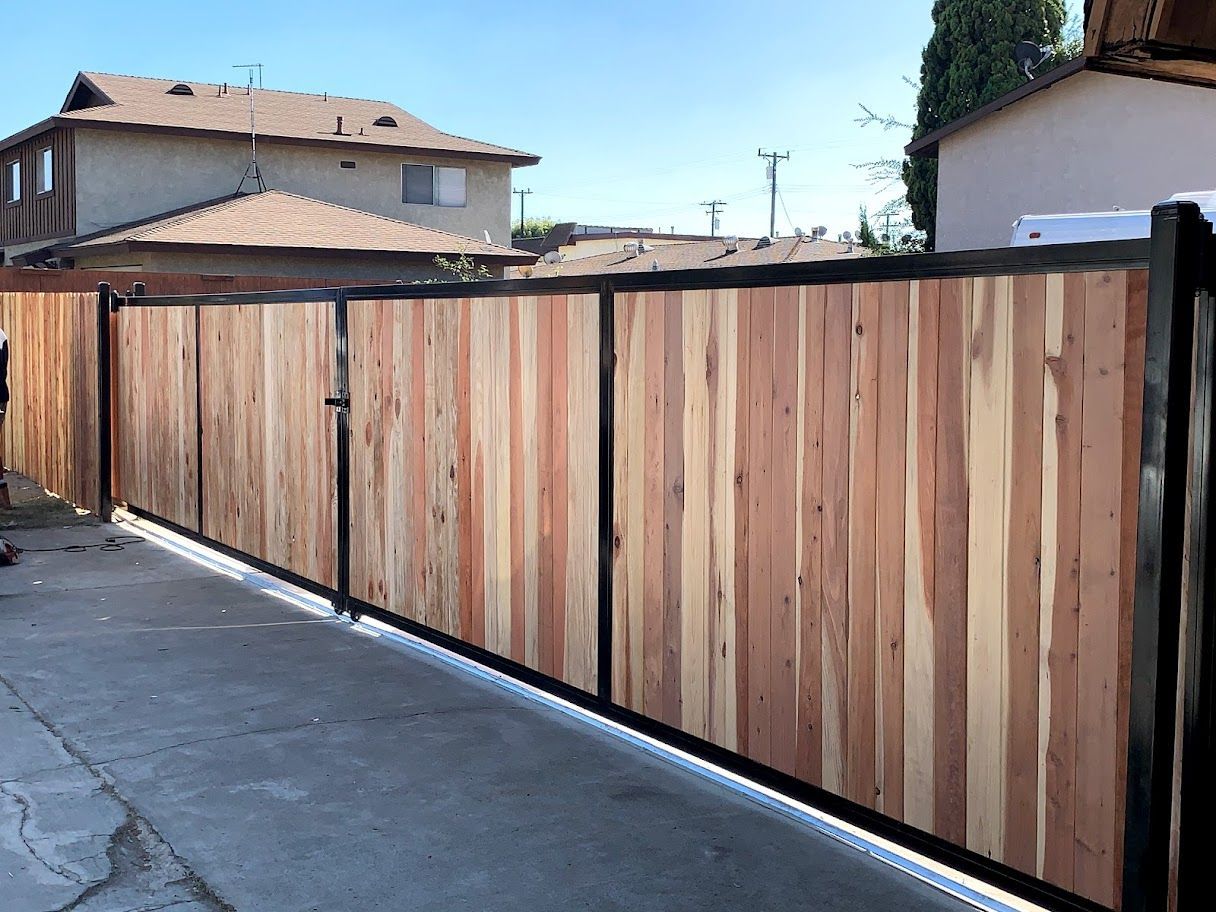All Categories
Featured
Installing a fence around your residential or commercial property can improve privacy, safety and security, and appearances. Nevertheless, prior to obtaining started, it's necessary to determine whether you need a license for the setup. Different locations have differing regulations, and comprehending what's called for will certainly help guarantee that your fence is legal, risk-free, and constructed according to neighborhood criteria. Right here's an overview to help you navigate the permitting process for fence installment.
Why Are Permits Needed? Authorizations are needed to make sure that the setup of your fencing satisfies regional building codes and zoning regulations. These policies are in area to maintain the safety and security, appearance, and capability of properties in your area. Additionally, permits aid avoid disagreements with next-door neighbors regarding home lines, fence height, and various other architectural information.
Local authorities call for permits to keep track of things like exposure at junctions, public security, and possible damage to utilities like water pipelines or electric lines. The procedure helps maintain your fence job compliant with security and legal criteria.
Sorts Of Licenses You Might Need. The exact authorizations required can vary depending on your place and the specifics of your project. Below are the most typical kinds of authorizations you may need:
Structure Permit. Numerous cities and areas require a building authorization for fences that go beyond a specific elevation, usually over 6 feet. This permit makes certain that your fencing follows structural requirements, especially if it's made from certain materials such as concrete, metal, or brick. Building permits are likewise needed when your fence affects the overall landscape, like producing an audio barrier or blocking a sightline.
Zoning Authorization. Zoning authorizations are issued to make sure that your fencing adheres to local zoning regulations. These regulations might regulate where fences can be positioned on your property (e.g., backyard, front, or side), how high they can be, and whether they can be mounted near sidewalks or streets. Zoning regulations are established to maintain the overall aesthetic appeals of areas and keep website traffic safety and security.
Setback License. Some areas have obstacle laws that identify exactly how much a fencing has to be from the property line, road, or specific public spaces. Obstacle permits are made to guarantee that your fence doesn't interfere with bordering residential properties or public locations. A home survey may be required to validate residential or commercial property lines prior to getting this sort of permit.
HOA Approval. You may need to obtain approval from the HOA before setting up a fencing if you live in a neighborhood governed by a Homeowners Organization (HOA) HOAs usually have stringent standards regarding the kind of fence allowed the neighborhood, including its height, material, and shade. Constantly check with the HOA prior to beginning your task to prevent any type of disputes.
Just How to Request a Fence Authorization. The process for getting a license typically entails a number of actions:
Research Resident Laws. Start by examining your city or county's site to discover the specific requirements for fencing installation. You may require to see the neighborhood planning or structure department in person for more in-depth information.
Prepare Your Application. The majority of cities will call for an application, that includes information concerning your prepared fencing, such as:
![]()
The kind of fencing material (timber, plastic, chain-link, etc) The prepared height of the fencing. The place and dimensions of the fence. A residential or commercial property survey (to verify building lines) Submit the Application. After completing the application, send it to the local structure or zoning office. You might be required to pay a charge relying on your location and the size of your fencing. Costs can differ, however they generally cover the price of refining your demand and evaluating your strategies.
Wait for Authorization. As soon as your application is submitted, the local authorities will certainly evaluate your strategies to ensure they satisfy zoning and constructing needs. This process can take anywhere from a few days to numerous weeks, depending on the intricacy of the job and the quantity of license requests in your area.
![]()
If Essential),Assessment (. In some instances, you may require to set up an evaluation after the fencing is installed to guarantee it meets the called for requirements. If this action is required., your regional workplace will let you understand.
When You Don't Required a Permit. Not every fencing installment calls for a permit. Some scenarios where you could not require a permit consist of:
Setting up a fencing that's under a particular elevation (typically 3-4 feet for front backyards) Replacing an existing fence with one that is the same height and product. Mounting a temporary fencing (e.g., for construction or horticulture) Also if your job appears little, it's always advisable to inspect with local authorities to make sure you're complying with the right process.
Consequences of Not Obtaining an Authorization. Installing a fence without the necessary authorization can lead to considerable repercussions, consisting of fines, elimination of the fencing, and costly reinstallation. In some cases, regional authorities might need you to customize the fence if it does not fulfill code needs. Additionally, not obtaining an authorization could produce disagreements with next-door neighbors, particularly if the fencing is positioned incorrectly or goes against regional elevation guidelines.
Verdict. Prior to mounting a fence, it's crucial to look into the certain allowing needs in your area. If a license is necessary and to ensure that you're following the proper procedure, contact your regional structure or zoning department to find out. By safeguarding the proper licenses, you'll guarantee and avoid legal issues that your fencing installation is secure, certified, and hassle-free.
Why Are Permits Needed? Authorizations are needed to make sure that the setup of your fencing satisfies regional building codes and zoning regulations. These policies are in area to maintain the safety and security, appearance, and capability of properties in your area. Additionally, permits aid avoid disagreements with next-door neighbors regarding home lines, fence height, and various other architectural information.
Local authorities call for permits to keep track of things like exposure at junctions, public security, and possible damage to utilities like water pipelines or electric lines. The procedure helps maintain your fence job compliant with security and legal criteria.
Sorts Of Licenses You Might Need. The exact authorizations required can vary depending on your place and the specifics of your project. Below are the most typical kinds of authorizations you may need:
Structure Permit. Numerous cities and areas require a building authorization for fences that go beyond a specific elevation, usually over 6 feet. This permit makes certain that your fencing follows structural requirements, especially if it's made from certain materials such as concrete, metal, or brick. Building permits are likewise needed when your fence affects the overall landscape, like producing an audio barrier or blocking a sightline.
Zoning Authorization. Zoning authorizations are issued to make sure that your fencing adheres to local zoning regulations. These regulations might regulate where fences can be positioned on your property (e.g., backyard, front, or side), how high they can be, and whether they can be mounted near sidewalks or streets. Zoning regulations are established to maintain the overall aesthetic appeals of areas and keep website traffic safety and security.
Setback License. Some areas have obstacle laws that identify exactly how much a fencing has to be from the property line, road, or specific public spaces. Obstacle permits are made to guarantee that your fence doesn't interfere with bordering residential properties or public locations. A home survey may be required to validate residential or commercial property lines prior to getting this sort of permit.
HOA Approval. You may need to obtain approval from the HOA before setting up a fencing if you live in a neighborhood governed by a Homeowners Organization (HOA) HOAs usually have stringent standards regarding the kind of fence allowed the neighborhood, including its height, material, and shade. Constantly check with the HOA prior to beginning your task to prevent any type of disputes.
Just How to Request a Fence Authorization. The process for getting a license typically entails a number of actions:
Research Resident Laws. Start by examining your city or county's site to discover the specific requirements for fencing installation. You may require to see the neighborhood planning or structure department in person for more in-depth information.
Prepare Your Application. The majority of cities will call for an application, that includes information concerning your prepared fencing, such as:

The kind of fencing material (timber, plastic, chain-link, etc) The prepared height of the fencing. The place and dimensions of the fence. A residential or commercial property survey (to verify building lines) Submit the Application. After completing the application, send it to the local structure or zoning office. You might be required to pay a charge relying on your location and the size of your fencing. Costs can differ, however they generally cover the price of refining your demand and evaluating your strategies.
Wait for Authorization. As soon as your application is submitted, the local authorities will certainly evaluate your strategies to ensure they satisfy zoning and constructing needs. This process can take anywhere from a few days to numerous weeks, depending on the intricacy of the job and the quantity of license requests in your area.

If Essential),Assessment (. In some instances, you may require to set up an evaluation after the fencing is installed to guarantee it meets the called for requirements. If this action is required., your regional workplace will let you understand.
When You Don't Required a Permit. Not every fencing installment calls for a permit. Some scenarios where you could not require a permit consist of:
Setting up a fencing that's under a particular elevation (typically 3-4 feet for front backyards) Replacing an existing fence with one that is the same height and product. Mounting a temporary fencing (e.g., for construction or horticulture) Also if your job appears little, it's always advisable to inspect with local authorities to make sure you're complying with the right process.
Consequences of Not Obtaining an Authorization. Installing a fence without the necessary authorization can lead to considerable repercussions, consisting of fines, elimination of the fencing, and costly reinstallation. In some cases, regional authorities might need you to customize the fence if it does not fulfill code needs. Additionally, not obtaining an authorization could produce disagreements with next-door neighbors, particularly if the fencing is positioned incorrectly or goes against regional elevation guidelines.
Verdict. Prior to mounting a fence, it's crucial to look into the certain allowing needs in your area. If a license is necessary and to ensure that you're following the proper procedure, contact your regional structure or zoning department to find out. By safeguarding the proper licenses, you'll guarantee and avoid legal issues that your fencing installation is secure, certified, and hassle-free.
Latest Posts
Don’t Miss Exclusive Auto Repair Specials in Chicago at Montclare Auto Repair
Published May 26, 25
1 min read
Explore Brake Repair & More: Full Services Guide from Montclare Auto Repair
Published May 26, 25
1 min read
Secure Your Investment with Expert Gutter Installment
Published May 21, 25
1 min read
More
Latest Posts
Don’t Miss Exclusive Auto Repair Specials in Chicago at Montclare Auto Repair
Published May 26, 25
1 min read
Explore Brake Repair & More: Full Services Guide from Montclare Auto Repair
Published May 26, 25
1 min read
Secure Your Investment with Expert Gutter Installment
Published May 21, 25
1 min read